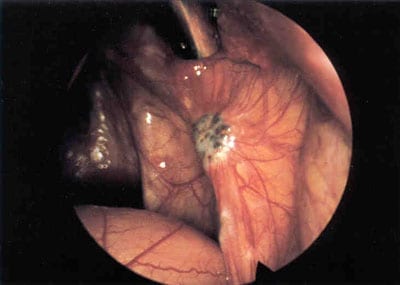Endometriosis is a condition where tissue that is somewhat similar to the lining of the uterus (the endometrium) is found outside the uterus where it does not belong. This abnormal tissue contains endometrial glands and stroma. The glands secrete substances that irritate the surrounding tissues, sometimes causing them to bleed. The immune system responds to the release of these substances by releasing inflammatory proteins that rush to the site of disease, causing swelling and inflammation. The disease itself and the inflammatory response to the disease can cause the patient severe pelvic pain. Over time, scar tissue may form and bands of scarring may develop, sticking the pelvic organs together (adhesions).
What is Endometriosis?

Endometriosis does not discriminate against age, ethnicity or socioeconomic status. It can affect women from every walk of life and in every life-phase.
What are the symptoms of Endometriosis?
Many patients will find that their symptoms fluctuate during their monthly cycle. The pain can worsen at the time of menstruation and sometimes also during ovulation. These fluctuations are believed to be due to changes in hormone levels which effects activity of the endometriosis. Endometriosis contains estrogen and progesterone receptors. These receptors influence disease activity by responding to the levels of estrogen and progesterone in the surrounding environment. The most common site of endometriosis is the peritoneum, a saran-like wrap that covers the inside of the pelvis and the pelvic structures. Most women with endometriosis have flat superficial lesions involving the peritoneum that cannot be detected via imaging (ultrasound, CT or MRI). In some cases, however, the lesions are deep and invasive and can involve the bladder, bowel, ureters, ovaries and even distant sites such as the diaphragm.
It is estimated that around 1 in 10 women are affected by endometriosis, which equates to some 176 million women worldwide.
Endometriosis is one of the most common gynecological diseases, according to the National Institute of Child Health and Human Development (NICHD). It is estimated that around 1 in 10 women are affected by endometriosis, which equates to some 176 million women worldwide. Endometriosis does not discriminate against age, ethnicity or socioeconomic status. It can affect women from every walk of life and in every life-phase: teenage schoolgirls, mothers, women who have put off having children, and women post-menopause. The disease can impact upon all aspects of a girl or woman’s quality of life. Many women suffer for years and visit multiple doctors before finally receiving a diagnosis. The diagnostic delay from the onset of symptoms to diagnosis ranges in average from 7 to 10 years.
Endometriosis may be suspected if a woman is suffering from pelvic pain, cyclical pain, painful sex, painful bowel movements, painful urination and/or gastrointestinal symptoms. GI symptoms can include diarrhea, constipation, nausea, gassiness, bloating and intestinal cramping pain. During the pelvic exam, the patient may report specific areas of tenderness and pain. The physician may detect nodularity behind the patient’s uterus. An actual diagnosis is only possible via surgery, where biopsies are obtained of any areas of abnormal tissue, sent to a pathologist for microscopic inspection and the presence of endometrial-like glands and stroma are confirmed.
Further Reading: “What are the common endometriosis symptoms?”
The lesser-known facts about endometriosis:
- Did you know that endometriosis can persist into menopause?
- Did you know that in very rare cases endometriosis has been found involving the lung, brain, eye, kidney and liver?
- Did you know that the oldest patient ever to be treated for endometriosis was in her 80s?
- Did you know that anecdotal reports of endometriosis date back to 1825 BC in the Kahun Papyrus in ancient Egypt?
- Did you know that endometriosis has been reported in stillborn female fetuses, prepubescent girls, men undergoing treatment for prostate cancer, and women born without a uterus?
UP NEXT: What happens when you have endometriosis?
Read Dr. Cook’s most shared article here: What it Really Means to Have Endometriosis.
Additional Endo Resources:
Follow us on Instagram
Join our Facebook conversation
Read Dr. Cook’s Books
Comments are closed.

Permalink